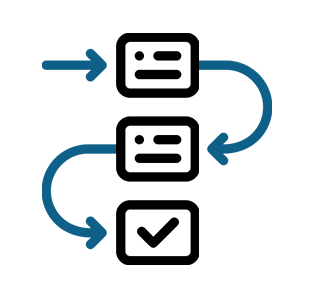The 3-Phase Email Marketing Workflow Broken Down
If you look after an email program, you’ve probably been asked: “Can we just send another email?”
As daunting as this question may be, it should come as no surprise! After all, email marketing is your most powerful channel—ranked among the top three most impactful marketing channels by nearly 80% of respondents who completed our 2021 State of Email survey.
Yet 70% of respondents said their email workload increased. And 45% are contending with more last-minute email changes than they have in the past. Yikes!
How can you prepare for email marketing requests that come from your stakeholders (and your organization at large)? And how do you manage email design, development, and content?
Our recommendation: set your email team up for success with an email marketing workflow—one that is defined less by control and more by flexibility.
Phase 1: Planning
The first phase of a great email marketing workflow should ensure alignment across all stakeholders. That includes setting expectations and mapping out the purpose of your email campaign.
Ask the right questions
First things first: break it down to the basics. You’ll need to determine:
- Why are you sending this email?
- What KPIs will tell you whether the email achieved its goal?
- How will you do it?
Our email campaign planning template (available as a Google Sheet) asks these questions and more, helping you get down to the nitty gritty of your email sends all while keeping everyone aligned—and on track.
Build out your email modules
Email modules (sometimes referred to as a component) are the building blocks to your emails that allow you to combine smaller sections to create a larger email design. They come in varieties like:
- Snippets, which are tailored to a specific email, like a call-to-action (CTA) button
- Partials, which are consistent across multiple emails, like an email footer
Plus, if they’re built and tested ahead of time, they’ll help save major time on development down the line.
Our tip: make it a project! Set aside time to build out your email modules and eventually, you’ll have have enough to build your own modular email design system. (Spoiler: we cover this next.)
Set up your email design system
You may be familiar with a design system—but what about an email design system? The same principle applies: they’re built to help with efficiency and consistency, specifically with email.
An email design system is a collection collection of reusable components, guided by standards that teams use to create on-brand emails. They include things like:
- Brand colors and assets like logos, icons, and imagery
- Email modules used to build emails, like snippets and partials
- Email templates that can be reused across campaigns
Trust us: setting up an email design system will pay dividends with helping your team create better emails, faster. We break it down into six steps here.
Give modular email creation a try! Litmus makes it easy to go modular. Store and organize your snippets and partials in Design Library. Start your free trial →
Phase 2: Build & QA
Now that you’ve identified your email’s purpose and built out your modular email design system, it’s time to put it all together.
This next phase is where email copy meets code—and email testing and QA takes place.
Craft your email copy
Email copy is the bread and butter of your email campaigns. It’s where copy and design meet to help guide subscribers to taking action.
One things to note: writing copy for emails is unlike writing for any other marketing channels. You’ve got to keep certain things in mind, like character counts and truncation. It’s an art form unto itself!
Keep our Email Copywriting Kit handy as you write for:
- Ideal character counts to avoid awkard truncation
- A sample copy framework to make your own
- Writing tips for compelling copy and CTAs
Build your email
Once email copy is finalized, you can start building your email. That’s where email modules (the ones you would have built out earlier) come into play.
You can even take things at step further by building out a collection of email templates: an HTML file composed of reusable code modules, making it as easy as copying and pasting your copy, links, and image URLs to create an email.
An email template should:
- Have well-defined components—aka, the building blocks to your emails
- Be well-tested so they don’t break
- Be accessible and optimized for Dark Mode
Need some help getting started? We created six free email templates for you to tailor to your own brand—fully optimized for 100+ email clients, apps, and devices (including Dark Mode).
Email testing and QA
No one likes to see an email they built, break. And subscribers don’t like to be on the receiving end, either!
Make sure the email you build is the one subscribers see. (That means no broken images, broken links, or Dark Mode mishaps.)
By way of email testing and QA, you’ll be able to make sure your emails looks pixel perfect, every time. Make it easy to QA test with a checklist of the 29 of the most common and critical checkpoints.
Phase 3: Review your results
The last phase should be all about review and reflection. Make sure you evaluate your email performance regularly and make it a part of your email marketing workflow.
Review your performance over a 12-month period with our email reporting slide template. Or if you haven’t yet completed a 2022 review, you should definitely do so now!
Be nimble, quick, and efficient
The art of a great workflow is defined less by control and more by flexibility. Here are seven of our favorite tools to help you be more nimble, quick, and efficient as an email marketer.

Kimberly Huang
Kimberly Huang is a Content Marketing Manager at Litmus

